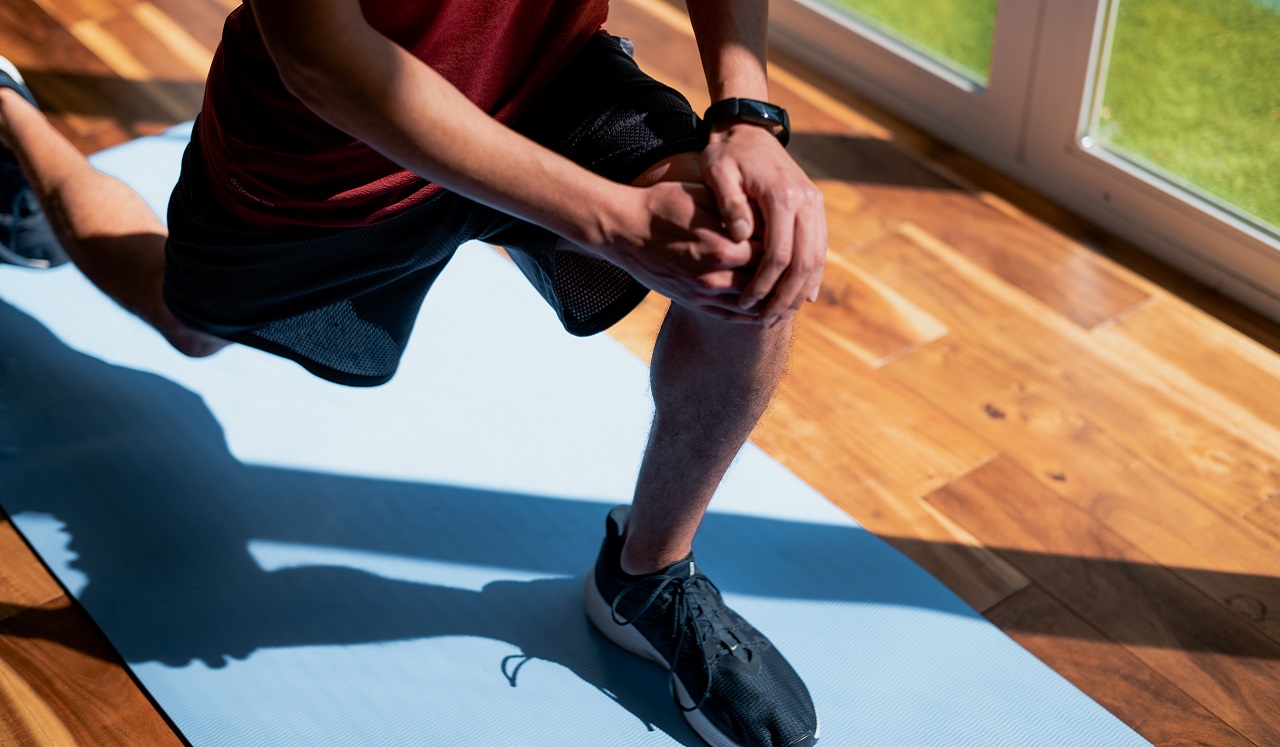The relationship between stress and fitness can create a vicious cycle. Stress can lead to inactivity; however, activity is what’s needed to fend off strife in your life.
“Stress can make us feel less motivated to work out. It also erodes sleep quality, so we have less energy—making us less likely to go to the gym,” says Noor Alzarka, MD, MPH, CAQSM, family and sports medicine doctor at Memorial Hermann Medical Group Katy Primary Care & Sports Medicine.
The irony is that exercise could really aid us in stressful times. “Exercise helps you feel calmer, refreshed and mentally sharper,” she says. “It can reduce muscle tension, improve sleep and reduce anxiety, depression and anger.”
Working out boosts your mood naturally by releasing feel-good brain chemicals, such as endorphins, serotonin and dopamine.
Do yourself a favor and tackle tension by moving—even if it’s for brief moments.
Dr. Alzarka offers these tips on how to move to help release stress in your life.
Stress Zapper: Go slowly.
Why: When your mind is tightly wound, so are your muscles. “You could be more prone to injury if you’re not well rested and you’re not well conditioned from exercising already,” Dr. Alzarka says.
Tip: Start slowly and with low-intensity workouts, then build up gradually. Also, setting and accomplishing mini-goals encourages you to keep on moving.
When launching a routine, “there are plenty of alternatives to high-intensity interval training,” she says.
She recommends resistance bands or a beginner’s yoga class. Elliptical machines also have less impact on your joints.
Stress Zapper: Take timeouts.
Why: Taking breaks will enable you to handle tasks better, because your mood will be lifted and your mind sharpened, Dr. Alzarka says.
Tip: Review your schedule and find 10- to 30-minute blocks that you could carve out for exercise. Look for times when you’re more apt to be energized and motivated. “You might exercise during your lunch break or at rush hour before heading home after work,” she says.
Stress Zapper: Find motivators.
Why: The scale is a fickle friend – it can sometimes cause disappointment, which can in turn sap your energy. You need to dig deep to find motivation and ensure that your desires are bigger than your belt size.
Tip: Think long-term. “Exercise plays a huge role in healthy aging and remaining more functional in later life,” Dr. Alzarka says. “If you’re healthy, you can be more fully present for your family and live a longer life.”
Being fit also reduces risks of dementia and improves cognitive function, both short- and long-term, she adds.
Stress Zapper: Combine fitness and your social life.
Why: Sharing challenges, being distracted or just laughing with others can ease tension.
“Sometimes we don’t have intrinsic motivation, especially when we’re experiencing stress in life. Looking for someone willing to go on a walk or to the gym with you might make you less inclined to back out of an exercise plan.”
Besides, “having company in itself can be healthy,” she says. “You can decompress or divert yourself by talking about other things.”
Tip: If you walk outside, take some time to catch up with friends or family on the phone—as long as you’re aware of traffic.
You also can join a fitness class, walk with co-workers or work out with family and friends or in a group to relieve anxiety and boost motivation. Any of these scenarios will allow you to hold each other accountable and maximize your progress.
Stress Zapper: Pair TV time with your physical activity.
Why: If you link activity with a reward, you’re more likely to show up.
Tip: Buy a used exercise bike, elliptical or treadmill with a TV screen and put it in your home office. Or join a gym with equipment that allows you to consume your favorite programs while your exercise, Dr. Alzarka says.
Stress Zapper: Seek affordable options if you’re on a tight budget.
Why: The goal is to reduce your stress and worries, so don’t let finances drag you down.
Tip: Find physical activities that you can perform at no cost, such as climbing stairs in your building or strolling a path around your office, Dr. Alzarka says. Or use low-cost equipment such as resistance bands.
Ideally, you can build up to 150 minutes a week of moderately intense cardiovascular activity and two or more days weekly of strength-training of your major muscles.
Just by living your life with a few modifications, you can create balance and better manage your stress and fitness routine.


